Sunday March 10th, 2024 – 3pm
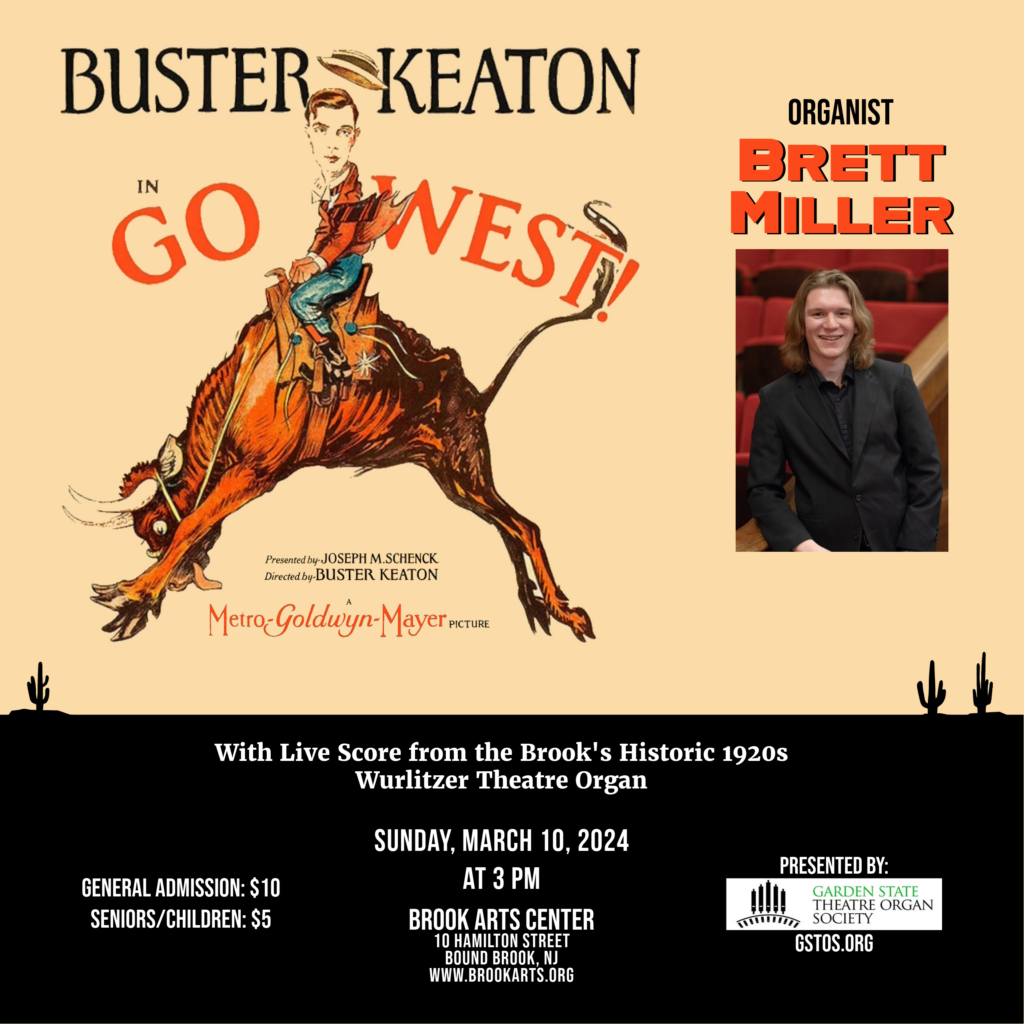
Sunday March 10th, 2024 – 3pm

3/10 RAINBOW ROOM ORGAN
3pm Sunday, February 18, 2024
Rahway Senior Citizens Center
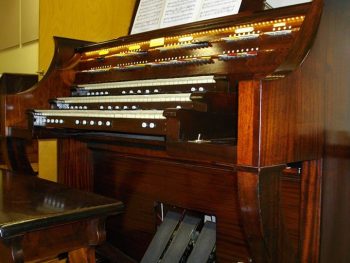
This is a member only event. This meeting will include the financial report for the 2023 fiscal year given by Treasurer, Lee Popick. This is one of four annual business meetings and pizza will be provided.
Directions: From the south: Take the Garden State Parkway to exit 135 (Clark and Rahway), stay right and turn onto Brandt Avenue. Follow directions below from *. From the north: Take the Garden State Parkway to exit 135 (Clark and Rahway), turn left under the Parkway, and exit at the first right onto Brant Avenue. *Continue on Brant until it ends and turn left at the traffic light onto Westfield Ave. Follow Westfield for three traffic lights. (The road changes name at St. Georges Ave. to West Grand Ave.) At the third light, turn right onto Irving Street. Go two blocks and turn right onto Central Avenue. (You will see the Union County Arts Center on the left corner as you turn.) Go two blocks on Central and turn left onto Esterbrook, The Senior Center is two blocks ahead on your right. Park in the free lot behind the center, or on the street.
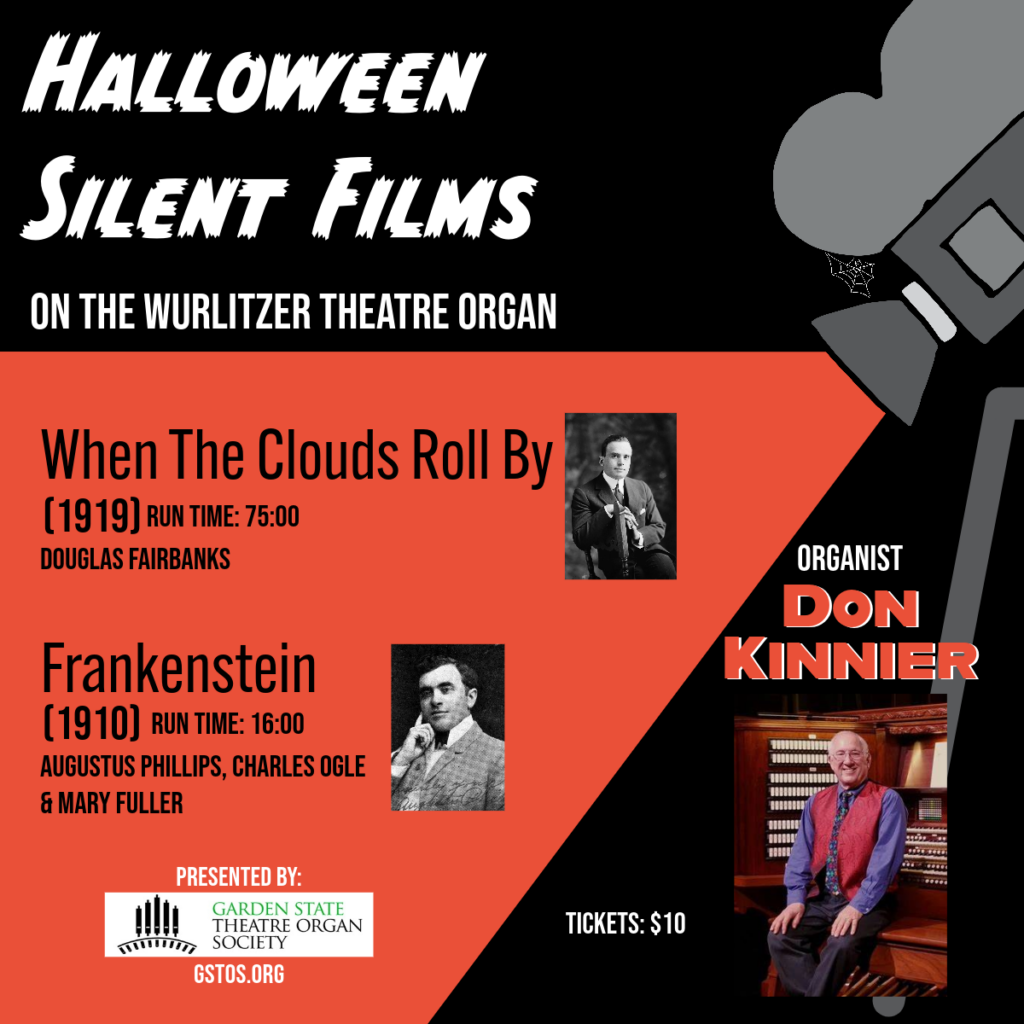
Organist, Don Kinnier, returns to the Brook Theatre this October for two rare Halloween Silent Film Screenings: “Edison’s Frankenstein” and Doug Fairbanks in “When the Clouds Roll By”. October 22, 2023 at 3pm.
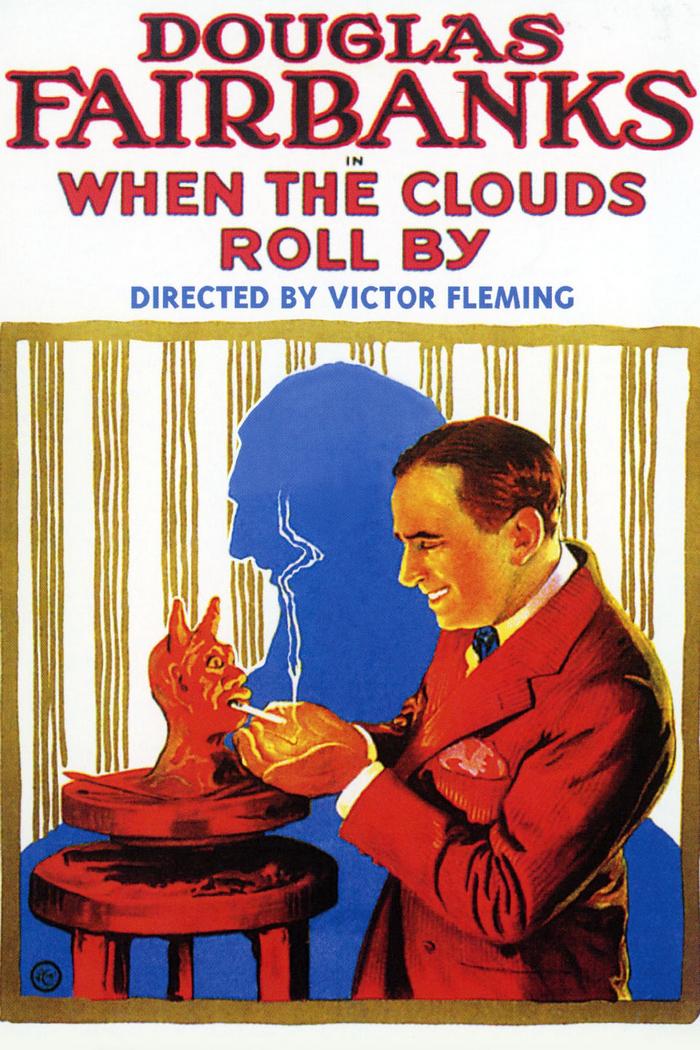 The Garden State Theatre Organ Society proudly presents the 1919 feature film, “When The Clouds Roll By” starring Douglas Fairbanks.
The Garden State Theatre Organ Society proudly presents the 1919 feature film, “When The Clouds Roll By” starring Douglas Fairbanks.
Doug Fairbanks stars as Daniel Boone Brown, a superstitious but ambitious young New Yorker who is the victim of a demented psychiatrist named Dr. Ulrich Metz, played by Herbert Grimwood. Dr Metz, with the aid of numberless associates serving him in the interests of science, arranges circumstances intended to drive Daniel to suicide. “When The Clouds Roll By” is the last of the romantic comedies that Fairbanks starred in before moving on to the bigger productions like Zorro and The Black Pirate for which he known for. At the time of filming When the Clouds Roll By, Fairbanks had just formed United Artists with Mary Pickford, Charlie Chaplin, and D.W. Griffith. This was the first time that a group of major stars broke their ties to the studios to make and distribute their own movies.
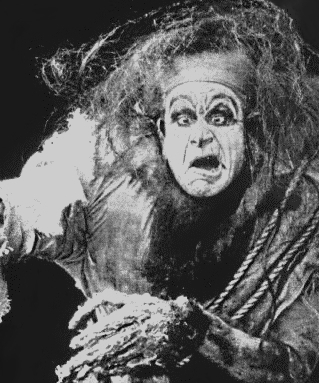
As an added feature, we are also presenting “Edison’s Frankenstein” (1910). The film is considered a loose adaptation of Mary Shelley’s Frankenstein told in 16 minutes! The film was released towards the end of production for Edison’s Studios which would halt film production by 1918. The cast stars Mary Fuller as Elizabeth, Augustus Phillips as Frankenstein and Charles Stanton Ogle as The Monster and directed by Edison Studio regular, James Searle Dawley. Dawley direct over 300 short films and 56 full length pictures in his career. All his films were silent films with the exception of two experimental films made for Lee DeForrest. Edison’s Frankenstein was filmed in 3 days in January 1910 at Edison’s Studio in the Bronx, New York City. The film is one of the earlier films to be associated with music cue sheets (published in Edison’s Kinetogram) and included pieces like “You’ll Remember Me” from the 1843 opera The Bohemian Girl, the 1852 “Melody in F”, “dramatic music” (presumably the “Wolf’s Glen” scene) from the 1821 opera Der Freischutz, the 1835 song “Annie Laurie”, and the Bridal Chorus from the 1850 opera Lohengrin.
Tickets may be purchased at the door or by visiting the website https://www.brookarts.org/
Our accompanist for the screening is no stranger to GSTOS. A Philadelphia area native, Don Kinnier began his organ studies at age 9. His teachers were David Ulrich and Harry Greer. He accompanied his first silent film, The Phantom of the Opera, while a student at Drexel Institute. Though trained in classical music, Don became enamored with the theatre organ, and ultimately decided not to go for Baroque. During the 1960’s he served as house organist at the Lansdowne Theatre in suburban Philadelphia. During the 1970’s he toured the US, Canada, Argentina, and Taiwan performing concerts. Concurrently he was a technical representative for the Baldwin Organ Company. From 1979 to 1995 Don served as house organist at the Colonial Theatre in Phoenixville, PA, and as musical director for the Chester County Center for the Performing Arts. In addition to his work with the Betzwood Film Festival, Don accompanies classic silent films at the Philadelphia Film Festival, the Secret Cinema’s showings at Moore College of Art and the University of Pennsylvania. He has maintained a long and fruitful relationship with Longwood Gardens, playing recently at the Fanfare Weekend rededication of the large Aeolian organ there. He also plays at The Strand Capitol Performing Arts Center, and the Allen Theatre. Most recently, Don was named musical director of the New Reading Theatre Orchestra. He has completed a DVD , accompanying the 1925 Rudolph Valentino silent film “The Eagle”.
By Paul Citti
Originally printed in the Jan/Feb 2023 edition of Pedals and Pipes Newsletter
Enjoying his new found success, De Kleist began to neglect his duties at the factory so Wurlitzer ended up buying him out and reincorporated absorbing the De Kleist Company and keeping just the Wurlitzer name. By this time, Rudolf’s older son Howard played a major role in running the company. His younger brother Farny was sent to Germany to learn the German language and manufacturing techniques. While there he cultivated a partnership with Phillips Company, a manufacturer of Orchestrians which were large ornate cabinets containing a piano, organ pipes and percussions playable via paper rolls and could be coin operated. Wurlitzer ordered some in which Phillips received cash up front. Seeing the potential for success Wurlitzer wanted to purchase them on account as this would increase the volume of sales. To prove they were credit worthy Wurlitzer presented Phillips with their impeccable bank and financial statements. However Phillips still declined so Rudolf and son Howard went off to Germany and visited the town were Phillips was located and rented the most lavish hotel suite and traveled about in a fine carriage and team of horses. All this ostentatious display of wealth persuaded Phillips to sell to them on credit. When Farny returned to America, in 1909 he became head of the factory at North Tonawanda NY where their next major product was developed called the Pianino. This was the first coin-operated piano using paper rolls with auto rewind. Other automated instruments followed such as harps, mandolins and orchestrians. Along came many variations and models but all of this growth equipped them with the capital and manufacturing expertise needed to tackle their biggest project to date that cemented their name forever in the history of American Music, the creation of the Mighty Wurlitzer Theater Pipe Organ; enter Robert-Hope Jones. In 1910, Wurlitzer formed a partnership with Robert Hope-Jones, a British engineer who came to America opening a pipe organ factory in Elmira NY. Utilizing his patents and experience they created the Unit Orchestra, a pipe organ that would be able to accompany silent-movies as this was a growing market with larger theaters being built. However, HopeJones proved to be a hindrance to production by constantly making changes and experimenting, a problem that caused his own company to flounder and go bankrupt. To solve this problem, he was barred from the factory and was told that once the organs started to generate a profit, they would provide him with a research laboratory in the factory. Instead he committed suicide. Well, what is common knowledge is that they did generate a profit as Wurlizter became the largest producer of theater pipe organs in the world with peak production in 1926. Unfortunately Rudolf passed away in 1914 and did not see the success they attained in this market. His eldest son Howard passed away in 1928 and from this point on the company was headed by Farny with help of his other brother Rudolf Jr. who headed the rare violin collection at the NYC store. After theater organs were no longer needed they focused more on piano production with a partnership with Melville Clark and produced the first spinet piano. When prohibition ended in the 1930s, Farny in 1933 purchased patents for the Sampled Mechanism from Homer E. Caprehart and utilizing the design talents of Paul Fuller, created the jukebox as we know it today and coupled with their aggressive advertisement campaign featuring the song “Johnny One Note”, the name Wurlitzer and jukeboxes became inseparable. Further down the line in the 1950s, Wurlitzer harnessed the talents of inventor /Radio Engineer Benjamin Miessner to develop an electronic piano. Using traditional piano keys that struck steel reeds that in turn were amplified though a speaker produced an instrument that possessed touch sensitivity like a regular piano, did not need to be tuned and was in most models portable. This piano gained popularity among schools especially for group piano class in which the teacher and students wore headphones and the teacher could speak to any student individually via headset. As many as 48 pianos could be connected to this system. From this point on, Wurlitzer continued to produce many varieties of pianos and electronic organs that sold well into the late 1970s. In May of 1972, Farny the only surviving child of Rudolf and Leonie passed away at age 88. His wife Grace passed away in 1968 and having no children, the bulk of his estate valued at approximately $3.5 million went to charity as in life they lived very generously. In conclusion, the music industry which is a very volatile market requires a good eye and ear to identify trends and Rudolf, Howard and Farny were adept at recognizing the ideas and talents of others and refining those ideas into a product that, with a well-structured advertising campaign, sold well and most important, made people happy. Imagine all the smiles that appeared as those nickel buffalo coins stampeded down the slots of those automated instruments which in turn gave birth to the “Mighty Wurlitzer” Theater Organ which is loved, played and appreciated even to this day, even by those young of age or young of heart.
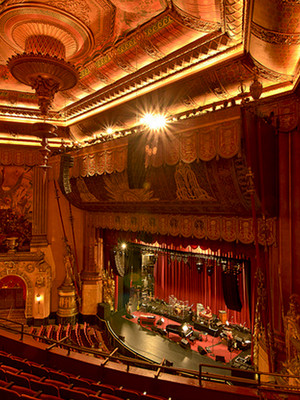
By George Andersen
Originally printed in the Nov 2022 edition of Pedals and Pipes Newsletter
There is an unusual connection that ties GSTOS and NYTOS together with the Broadway show Phantom of the Opera. The Andrew Lloyd Weber musical opened on January 26, 1988. This, the longest running show on Broadway is scheduled to close on Feb. 18, 2023 after 35 years and over 13,500 performances. The producers wanted an opening night party befitting the lavish production. They desired an elegant place that matched the theme of the show and was large enough to hold the nearly one thousand invited guests. They chose the Beacon Theatre, located on Broadway between West 74th and West 75th Streets. After all, the Beacon Theatre had both a 4/19 Wurlitzer theatre organ and a huge chandelier. There have been a number of film adaptations based on the book by Gaston Leroux, including the Carl Laemmle production in 1925 which was been a silent film staple for many theatre organ fans. In one scene, the Phantom hides in his lair beneath the Paris Opera House despairing over his unrequited infatuation with the opera company’s ingenue, Christine Daae. In the films, the Phantom plays an organ as he plots his revenge on Christine’s suitor.
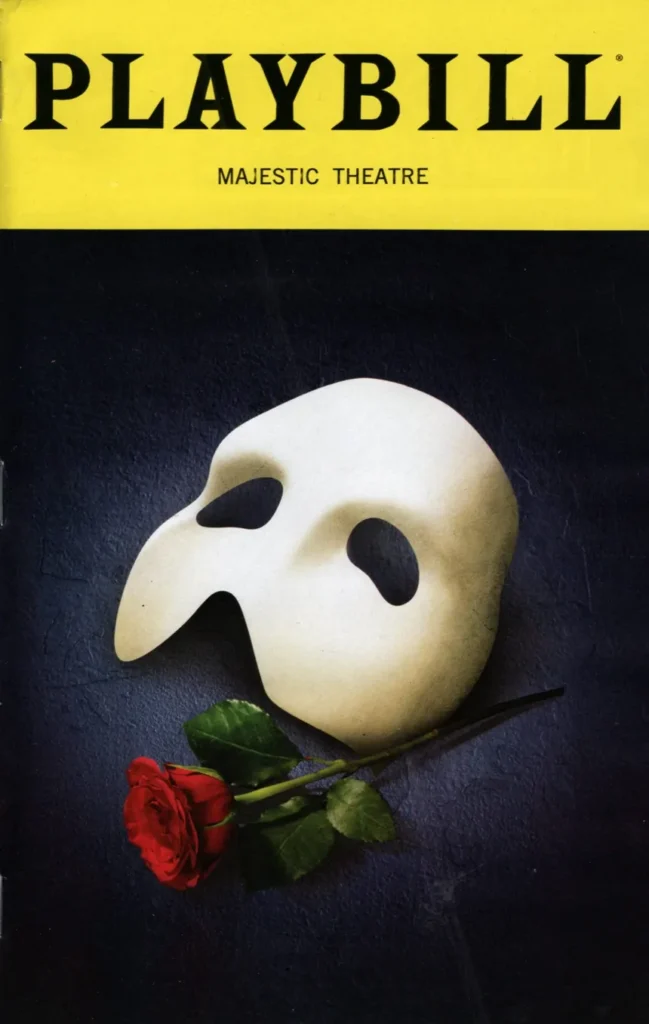
The Broadway production continued that theme using heavy electronic organ chords to convey his turgid emotions as he sits at the console of a very stylized console. When the organizers heard that there was a pipe organ in the Beacon, they decided they wanted to feature it at the opening night party. Crew members Joe and Jinny Vanore, Michael Cipolletti, Denise and George Andersen, and their advisor, organ builder Mel Robinson, had been working on the Beacon’s Wurlitzer getting it ready for a silent film series featuring Lee Erwin. The crew was invited to the party to supervise the operation of the instrument and police any problems that might occur during its use. In preparation, the theatre had been transformed into something almost unrecognizable. The event included a full catered meal that required tables and chairs. All the theatre seating had been removed and a false floor was built that was level from the lobby to the stage. The huge number of guests wouldn’t fit in just the orchestra of the theatre alone, so they used the balconies as well. Both balconies, though steeply raked, had also been fitted with level floors to accommodate dozens of round tables, each surrounded by chairs. The food was served buffet style and it was obvious that no expense had been spared. The elegant serving tables held mountains of hors d’oeuvre and every gourmet dish imaginable including ship roasts and servers in abundance. In addition to Andrew Lloyd Weber, the guests of honor included the stars, the actors, the director, and the producers of the show.
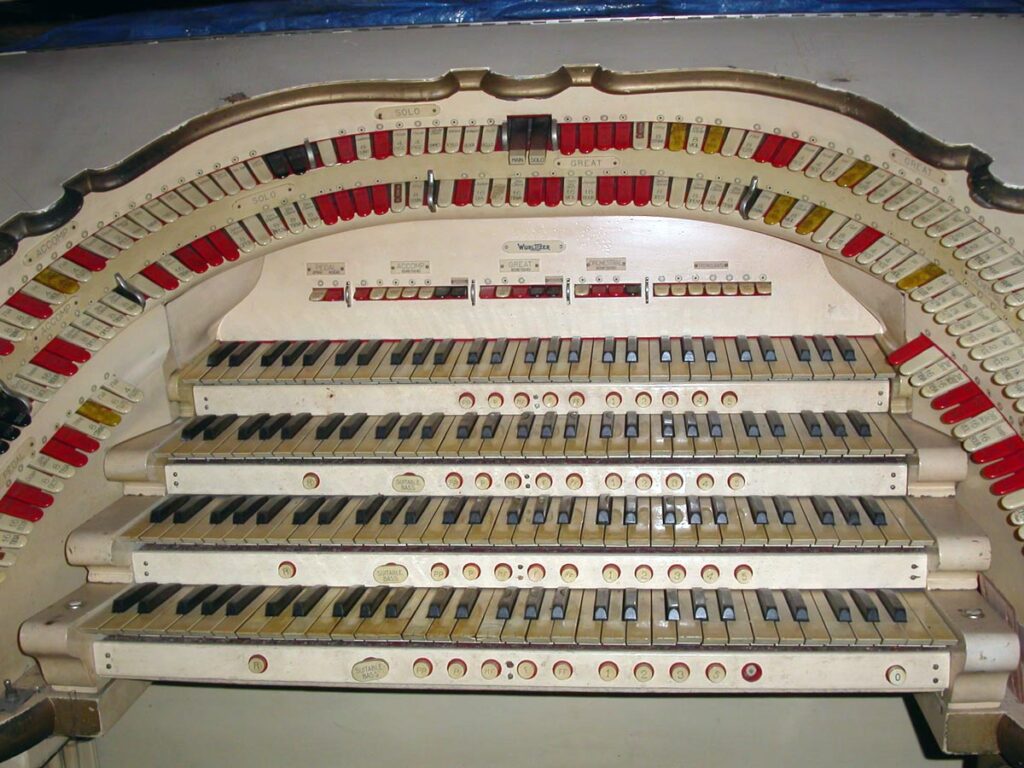
Other guests included everyone of note in the Broadway scene and city and state politicians. Everyone was dressed up their finest designer threads. The console of the Wurlitzer at the Beacon is on a lift that rises through an opening in the orchestra lift. To use the instrument, the cover over that opening must be removed manually, leaving an eight foot square hole in the floor. That presented a problem. Because the floor was now level with the stage where the head table was located, the organizers decided at the last minute that leaving the opening in the floor open so the organ console could rise would be too dangerous. That was especially true with all the wine and champagne that was being consumed. They couldn’t use the Wurlitzer. The organ crew was allowed to enjoy the party but was disappointed that the instrument they had so lovingly slaved over for years would not be heard.